|
精心策划的住宅有时候太过于贴近人的生活。虽然它们让人感到舒适,但有可能会把居住者限制在预先设想好的生活方式里。建筑师试图从一种不太接近客户最初预期的角度来进行设计,在考虑不同条件的同时提出自发性的解决方案,为业主赋予更充分的自由和主动性。 Well-planned houses are sometimes too close to human lives. While they are comfortable, I feel that too much planning has the risk of forcing a pre-defined lifestyle onto the residents. Perhaps if we start the process from a point not too close to the client’s initial wishes, and seek an autonomous solution while considering various conditions, we will ultimately enable them to live more freely and actively. ▼建筑概览,project overview 
拥有简洁几何平面的空间是一种有利于居住者自主利用空间的形式。由于人们对四方的空间比较熟悉,因此很容易去测量它们的尺度和关系。在该项目中,墙与墙交汇的角落被微微地扭转,使空间体验突然变得复杂起来,同时使房间看上去更加宽敞。 Simply-angled, geometric spaces are one of the possible forms for the residents to pursue freedom and make full use of an autonomous space. Since we are familiar with spaces designed with right angles, it is easy to measure their spatial volumes and relationships. However, by slightly turning the corners where the walls intersect, our spatial awareness suddenly becomes complicated, and we feel as if the limited space has expanded. ▼住宅街道视角,Exterior, as seen from the road 
业主一家人希望生活在一个充满发现的环境中,并且享受家人陪伴的感觉。基于对多个房间的需求,建筑师为住宅引入了12个边长为2.895米的正方形空间,并通过由两个正三角形组成的菱形空间将它们连接在一起。建筑师从初期的研究中感受到了这种模式的潜力,同时进行了以模型为基础的实验(fig1-2)。12个方形空间会随着空间序列逐渐变为18个(fig3-8),从而与场地形成完美契合,在不同的角度创造出动态的体验。主要的功能区域被设置在正方形的空间当中,菱形空间的使用则相对更加自由。 ▼模型研究,model study 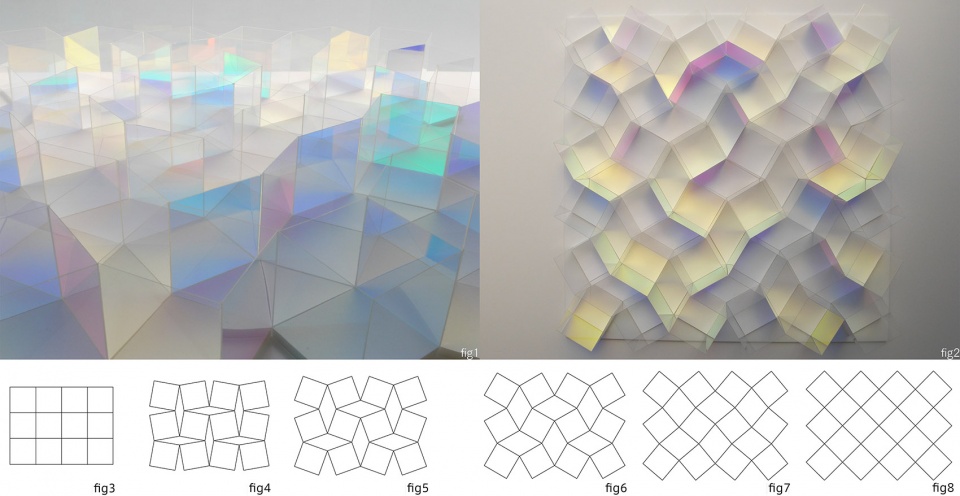
▼首层平面图,plan level 1 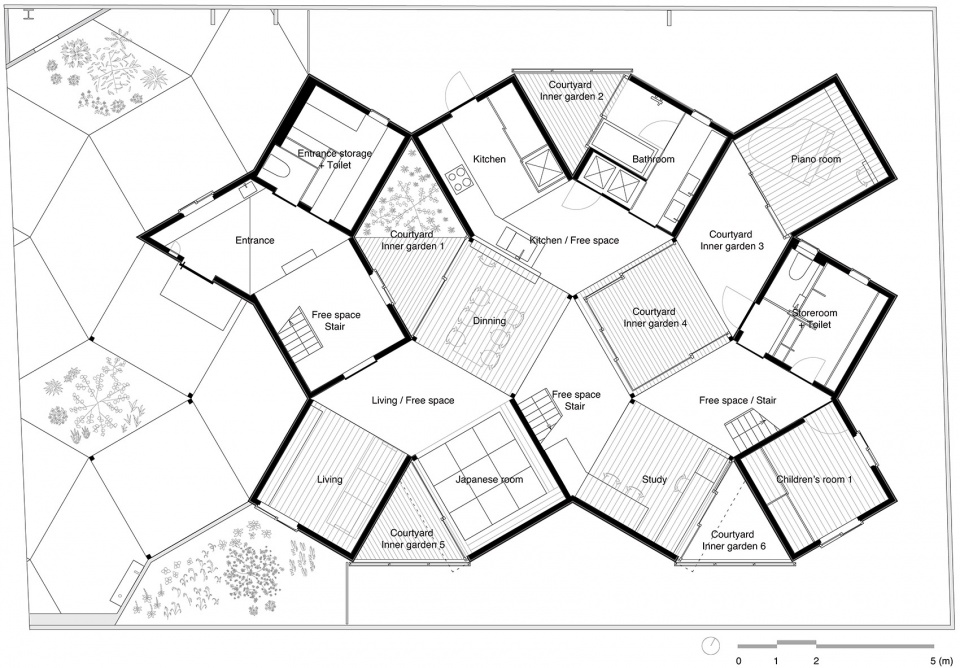
House in Hokusetsu is a house for a family who wishes to enjoy a life filled with everyday discoveries, and appreciate each other’s presence. Because they wanted to have many rooms, twelve 2.895-millimeter squares were arranged to connect to each other with a rhombus composed of two regular triangles. I had been sensing potential in this pattern from earlier studies, where we had experimented by making models(fig 1.2). As the twelve squares are gradually turned to become a sequence of eighteen squares(fig 3-8), a position that fit nicely into the site was selected, creating a dynamic pattern out of all the different angles. The main functions were primarily placed within the square parts of the plan, and the rhombus areas were left undefined for free use. ▼鸟瞰图,aerial view 
▼入口区域,洗手间位于镜子后方,Entrance, toilet behind mirror door 
▼从书房望向庭院和餐厅,Courtyard/Inner garden 4 and Dinning, seen from the Study 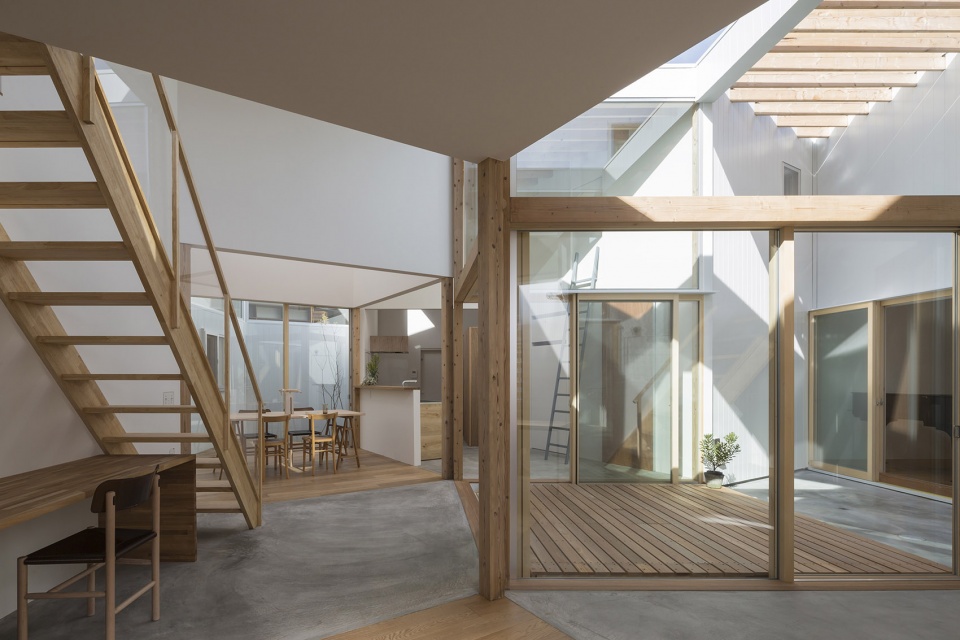
▼从楼梯望向庭院,view from the free space/stair 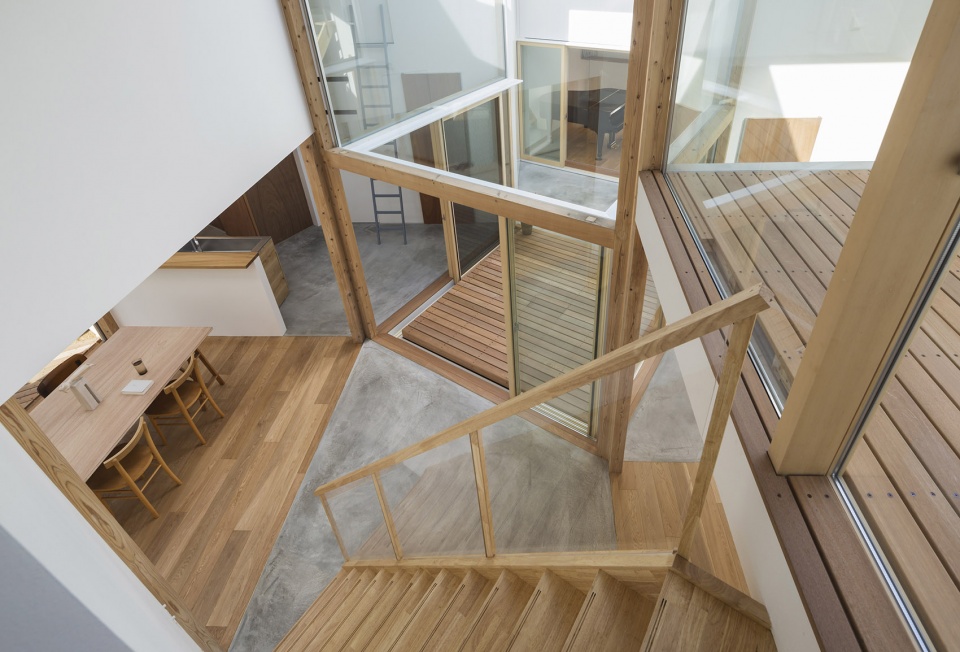
▼从餐厅望向客厅,view to the living room from the dining area 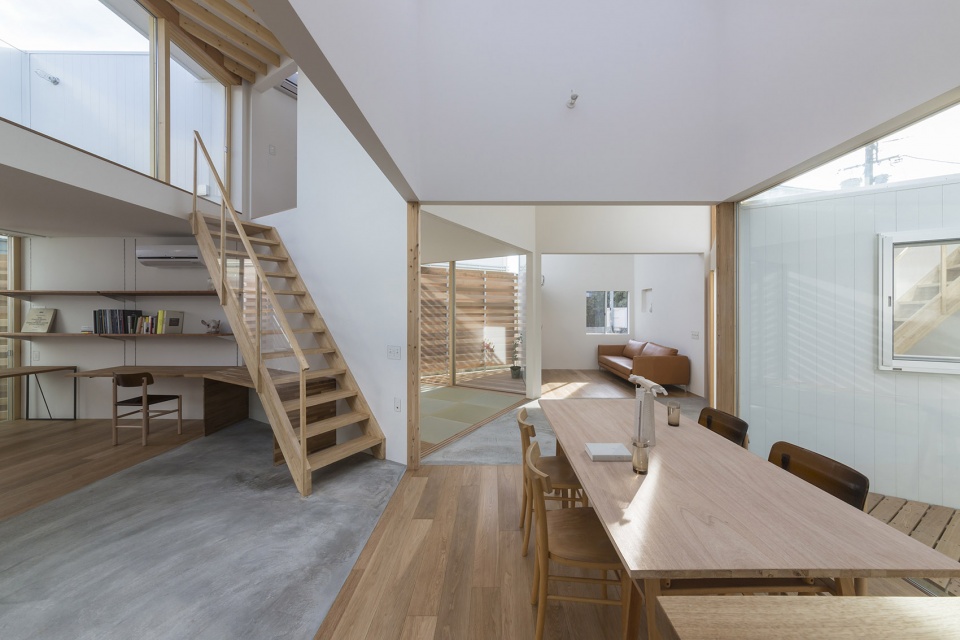
▼客厅,living room 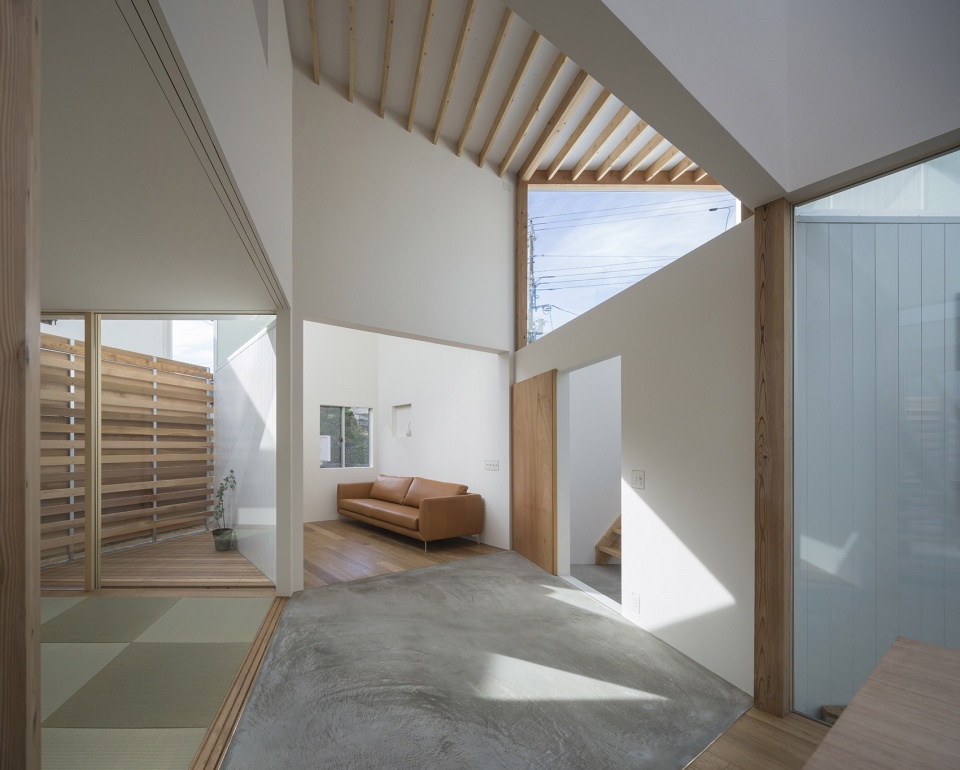
▼从客厅望向和室与餐厅,Dinning and Japanese room, seen from the Living room 
▼厨房,kitchen 
▼从餐厅望向厨房,View towards the Kitchen, as seen from Dinning 
▼厨房,kitchen ▼可自由使用的辅助空间,Spare and Hobby room 
▼从辅助空间望向中庭,View from the Spare room door 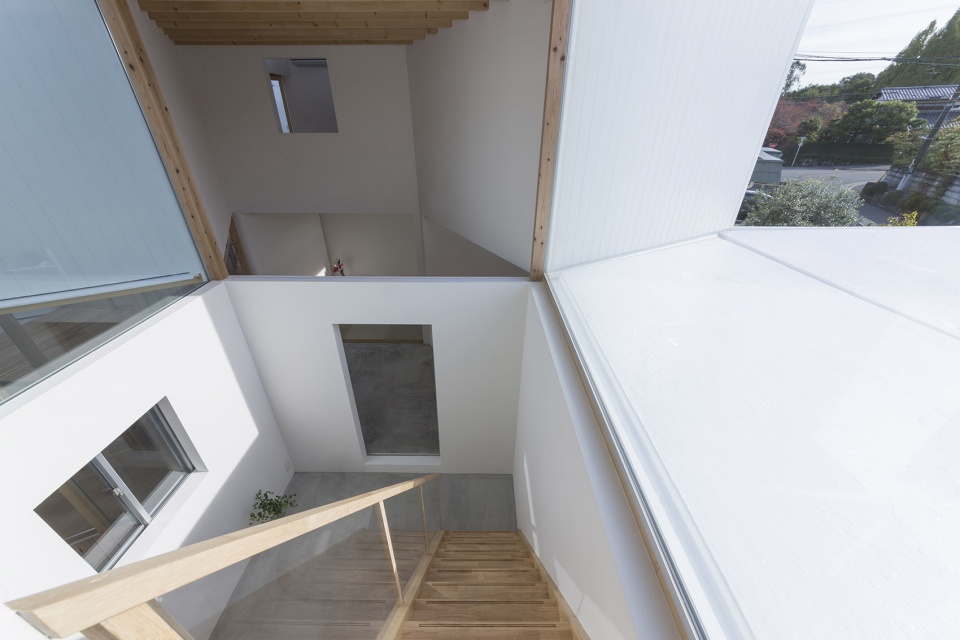
根据业主的要求,建筑结构相对于周边环境保持了一定的封闭性。建筑的外围设有3个花园空间,内部还包含2个庭院。室内空间和庭院均采用了天窗照明。由于住宅中朝向外部景观的视野较为有限,室内设计鼓励居住者在穿梭于不同房间的过程中找到自己所在的位置。建筑结构采用了木材,方形的空间由立柱简单地支撑,从而在独特的体块中保持了平静的氛围。▼轴测图,Axonometric drawing 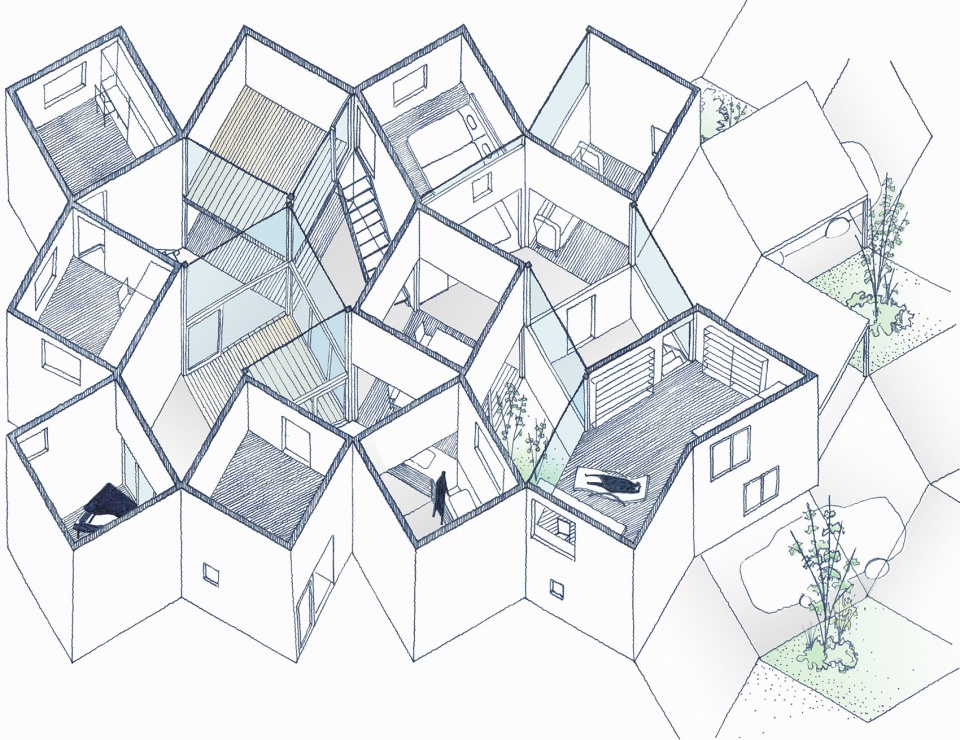
The structure remains relatively closed to its surroundings, which was the client’s wish. There are three garden spaces along the outer perimeter, and two courtyards on the interior. As a result of the plan pattern design, both indoor spaces and courtyards are brightened by top light, and illuminated with various forms of light. Since exposure to outdoor scenery, to which one can position himself, is limited, the space encourages the residents to travel between the different rooms to rediscover their own location. The structure is made of wood, and each square plan is simply supported by pillars, resulting in a peaceful interior despite its unique form.▼屋顶平台,Roof Deck 
▼自由空间和入口楼梯,Free space/Stair and Entrance 

▼从庭院望向琴房,Piano room, seen from Courtyard/Inner garden 4 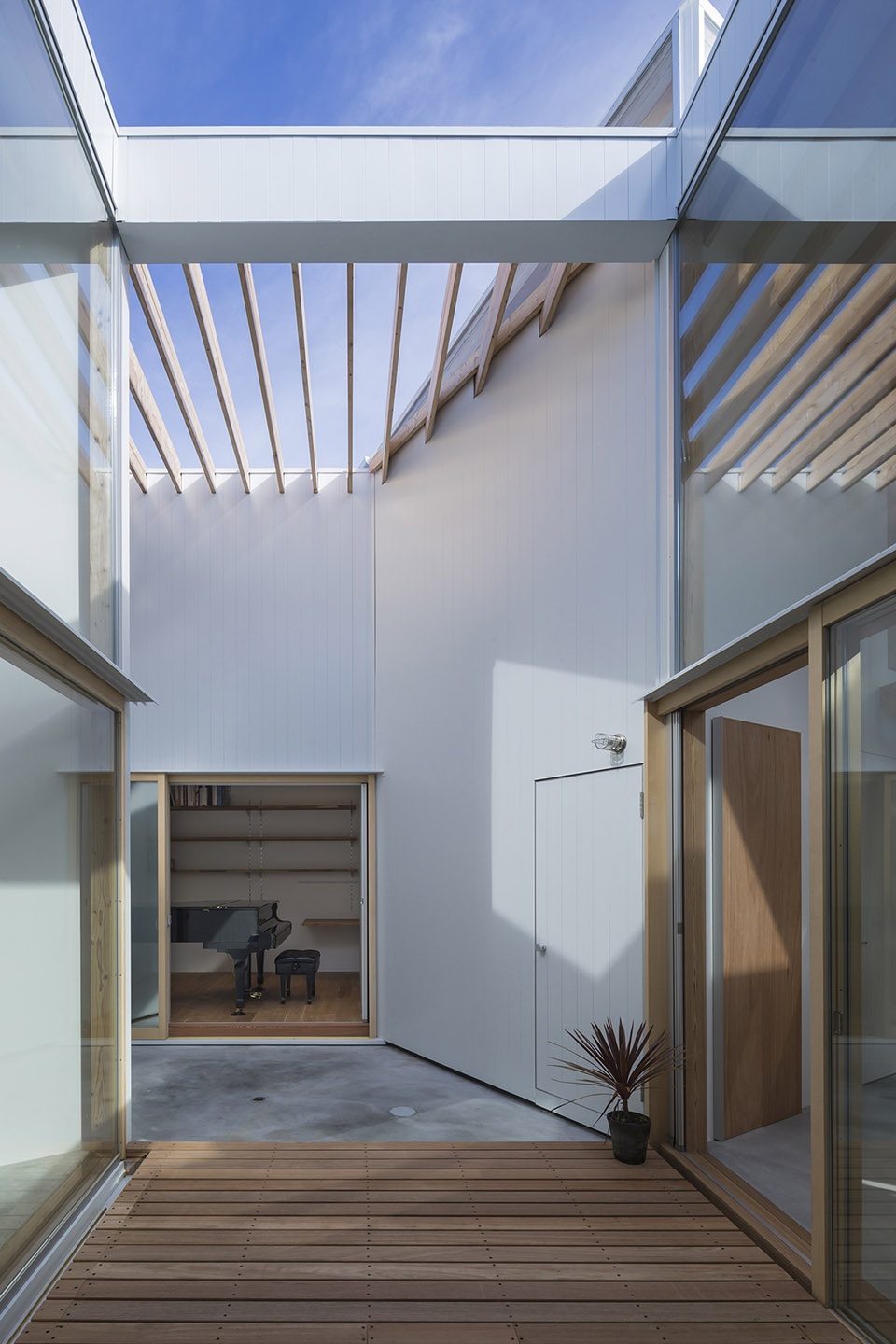
▼从客厅望向餐厅,View from the Living room 
▼从卧室望向中庭,View from the Bedroom 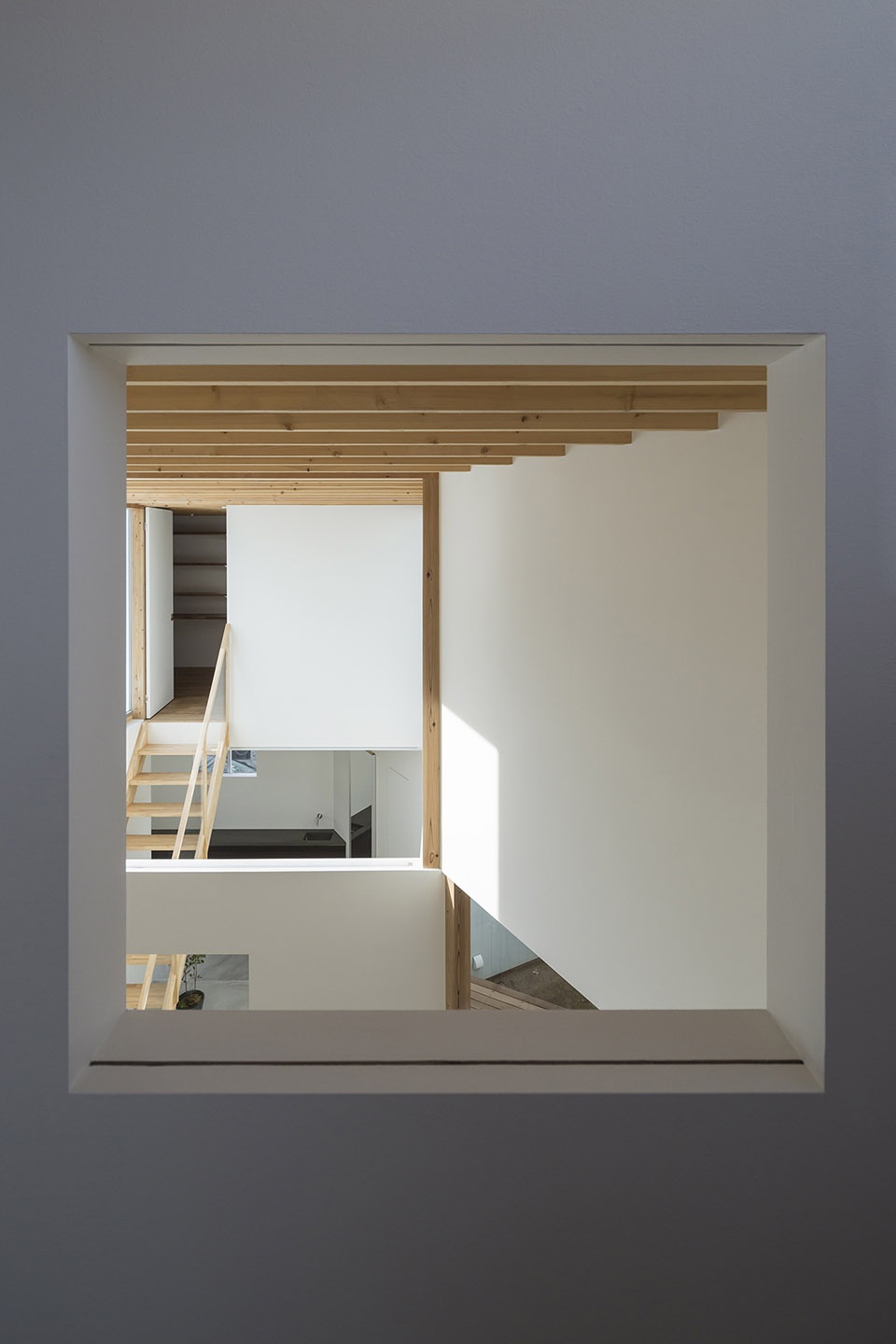
住宅的平面与旧时住宅中常见的“方形内的十字”布局有类似之处:每个空间拥有各自不同的功能属性,但同时具备了兼容和扩展的可能,能够适应生活方式的变化,并通过多种路径形成连接。整个住宅犹如一座水晶迷宫,在一系列“棱镜”的反射下,室内场景呈现出一种奇特而迷人的观感。 The design of this house has a simplicity similar to ‘a cross inside a square’ plan used in old houses. Each part, while representing a different quality, is also compatible and expandable, and there is possibility for various circulations to emerge. This house is filled with autonomous spaces that can accommodate changes in lifestyle; it is a crystalline labyrinth where the spaces are repeatedly reflected into a prismatic figure. ▼屋顶结构,Looking up at the roof structure 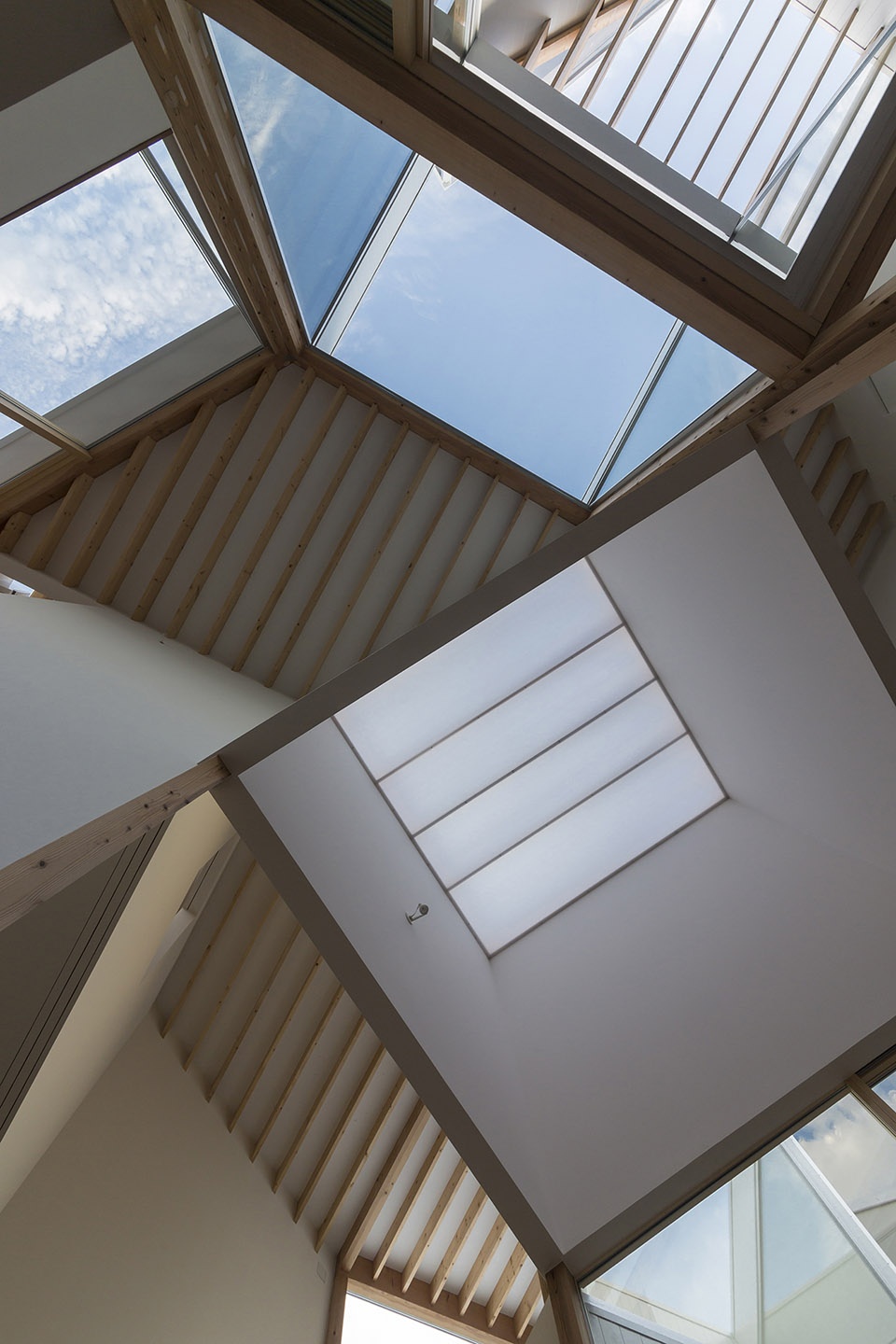

▼场地平面图,site plan 
▼首层平面图,plan level 1 
▼二层平面图,plan level 2 
House in Hokusetsu Location: Osaka, Japan House/Family Structure / Parents + Child Design: Tato Architects/Yo Shimada Team / Yo Shimada, Nobuhiko Sato
Structure Takashi Manda Structural Design Team / Takashi Manda, Taijiro Kato Construction: Hirota Co.,Ltd. Structure: Main Structure, Timber Scale: Two-story house
Site Area 381.27㎡
Building Area 150.53㎡ (39.48% of max 40% of coverage ratio permission)
Total Floor Area 196.07㎡ (51.42% of max 80% of floor area ratio permission) Completion: 2015 |





